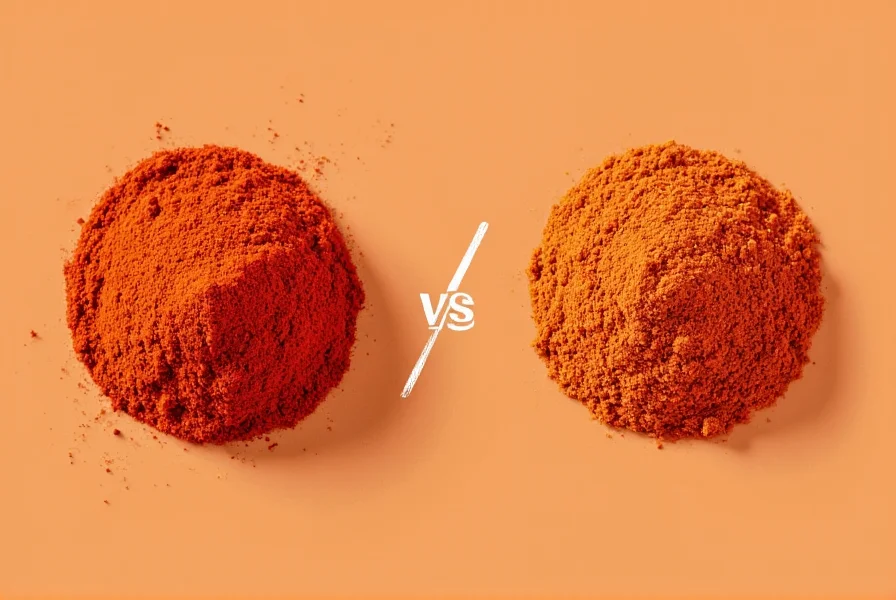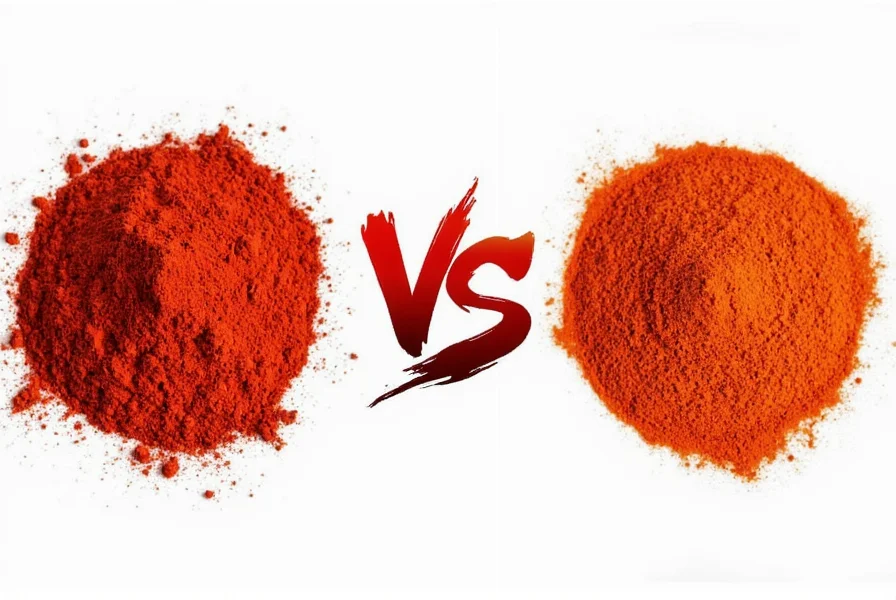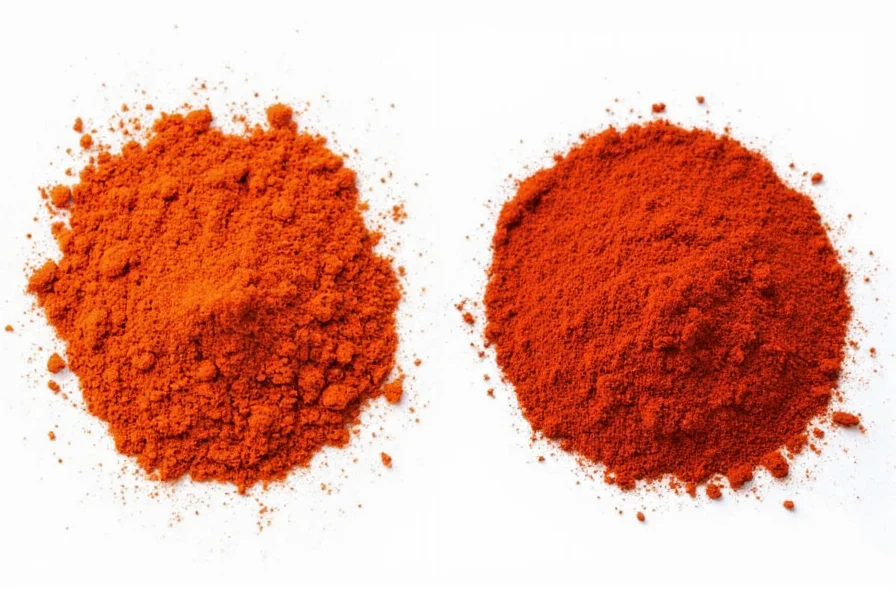Understanding the distinction between cayenne powder and paprika is essential for any home cook or professional chef looking to perfect their spice game. While both appear as vibrant red powders in your spice cabinet, these seasonings serve dramatically different culinary purposes. Let's explore what makes each unique and how to use them effectively.
Origins and Production Methods
Cayenne powder comes from dried cayenne peppers, a specific variety of Capsicum annuum that originated in French Guiana but now grows worldwide. The peppers are dried completely and ground into a fine powder, preserving their intense heat and distinctive flavor.
Paprika, by contrast, is made from various sweet or mild chili peppers, primarily grown in Hungary, Spain, and California. The production process involves drying peppers and grinding them into powder, but the specific pepper varieties used create significant differences in the final product. Hungarian paprika often comes from Kalocsai or Csemege peppers, while Spanish varieties frequently use ñora peppers that impart a characteristic smokiness.

Heat Level Comparison: The Critical Difference
The most significant difference between cayenne powder vs paprika lies in their heat measurement on the Scoville scale:
| Spice Type | Scoville Heat Units | Heat Perception |
|---|---|---|
| Cayenne powder | 30,000-50,000 SHU | Intensely hot, immediate burn |
| Sweet paprika | 0-500 SHU | Mild, barely noticeable heat |
| Hot paprika | 5,000-15,000 SHU | Moderate heat with complexity |
| Smoked paprika | 500-2,500 SHU | Mild to medium with smoky notes |
When comparing cayenne vs paprika heat levels, remember that even "hot" paprika varieties typically don't reach the lower threshold of cayenne's heat range. This dramatic difference explains why substituting one for the other without adjustment can ruin a dish.
Flavor Profiles and Culinary Applications
Cayenne powder delivers a straightforward, intense heat with subtle fruity undertones and a slight bitterness when used excessively. Chefs use it when they want pure heat without competing flavor notes. It's essential in:
- Cajun and Creole cuisine
- Hot sauces and salsas
- Spice rubs for meats
- Adding heat to soups and stews
Paprika offers far more flavor diversity depending on the variety:
- Sweet paprika: Earthy, slightly sweet, with notes of bell pepper - perfect for Hungarian goulash and chicken paprikash
- Smoked paprika (pimentón): Distinctive wood-fired flavor from peppers dried over oak fires - essential in Spanish chorizo and paella
- Hot paprika: Noticeable heat with underlying sweetness - used in some regional Hungarian dishes
Substitution Guidelines: When You Can and Can't Swap Them
Understanding cayenne powder and paprika substitution ratios is crucial when one spice isn't available. These aren't 1:1 replacements due to their heat disparity:
- Substituting paprika for cayenne: Use 3-4 times more paprika to achieve similar heat, but recognize you'll also introduce different flavor notes. For 1/4 tsp cayenne, try 3/4 tsp hot paprika or 1 tsp smoked paprika plus a pinch of cayenne.
- Substituting cayenne for paprika: Use 1/8-1/4 the amount of cayenne compared to paprika. For 1 tsp paprika, start with 1/4 tsp cayenne and adjust carefully.
When comparing smoked paprika vs cayenne powder, remember that smoked paprika brings a completely different flavor dimension that cayenne cannot replicate. Adding a bit of liquid smoke with cayenne might approximate the flavor, but won't be identical.
Nutritional Differences Worth Noting
Both spices contain capsaicin (in varying amounts), vitamin A, and antioxidants, but their nutritional profiles differ due to the varying pepper types used:
- Cayenne contains significantly more capsaicin, which may boost metabolism and provide pain relief
- Sweet paprika offers higher vitamin C content than cayenne
- Smoked paprika contains additional compounds from the smoking process that may have unique health benefits
- Both are low-calorie seasonings that add flavor without sodium
Storage Recommendations for Maximum Freshness
To preserve the vibrant color and flavor of both spices:
- Store in airtight containers away from light and heat
- Keep in a cool, dark cupboard (not above the stove)
- Replace cayenne every 6-12 months as its heat diminishes faster than paprika
- Replace paprika every 1-2 years before it loses its vibrant color
- Consider refrigerating both for extended shelf life in humid climates
Common Mistakes to Avoid
When working with these spices, watch out for these frequent errors:
- Assuming all paprika is mild (some varieties can be quite hot)
- Using cayenne as a color enhancer without considering its intense heat
- Adding either spice late in cooking (add paprika earlier to develop flavor, cayenne later to preserve heat)
- Storing spices in clear containers that degrade quality through light exposure
- Not tasting as you go when substituting one for the other

Practical Application Tips
Understanding the difference between cayenne powder and paprika transforms your cooking:
- Use paprika as a finishing spice for deviled eggs or roasted potatoes to showcase its color and mild flavor
- Add cayenne sparingly to chocolate desserts for a subtle heat contrast
- Combine smoked paprika with a tiny pinch of cayenne for balanced heat and smokiness in barbecue rubs
- Make a simple paprika oil by infusing olive oil with sweet paprika for salad dressings
- Create a cayenne honey by simmering honey with a small amount of cayenne for glazes
Frequently Asked Questions
Can I substitute paprika for cayenne in chili?
Yes, but with significant adjustments. For every 1/4 teaspoon of cayenne, use 3/4 teaspoon of hot paprika plus a tiny pinch of cayenne to maintain some heat. Sweet paprika alone won't provide sufficient heat for traditional chili recipes.
Why does my paprika taste different from cayenne even though both are red peppers?
Different pepper varieties create distinct flavor compounds. Cayenne comes from specific hot peppers with high capsaicin, while paprika uses various sweet or mild peppers with different sugar and flavor compound profiles, resulting in fundamentally different taste experiences despite similar appearance.
Which is healthier, cayenne powder or paprika?
Both offer health benefits but in different ways. Cayenne contains more capsaicin, which may boost metabolism and reduce inflammation. Sweet paprika provides more vitamin C and carotenoids. Neither is definitively "healthier" - they serve different nutritional purposes in a balanced diet.
Does paprika have any heat like cayenne?
It depends on the variety. Sweet paprika has virtually no heat (0-500 Scoville units), while hot paprika ranges from 5,000-15,000 units. Even hot paprika is significantly milder than cayenne (30,000-50,000 units), so don't expect similar heat levels when comparing cayenne powder vs paprika.
Can I make my own cayenne powder from fresh peppers?
Yes, you can make homemade cayenne powder by drying fresh cayenne peppers completely (using a dehydrator or low oven) then grinding them into a fine powder. Ensure complete drying to prevent mold, and wear gloves during handling to avoid skin irritation from the capsaicin oils.











 浙公网安备
33010002000092号
浙公网安备
33010002000092号 浙B2-20120091-4
浙B2-20120091-4